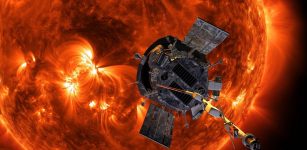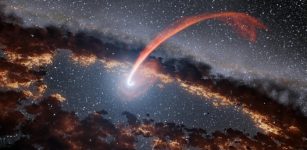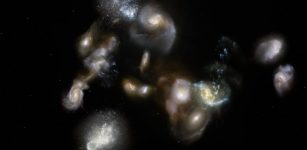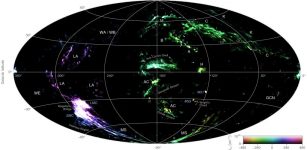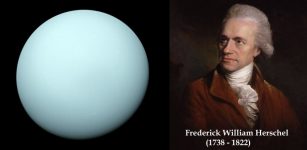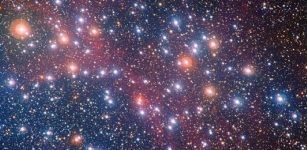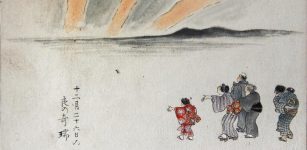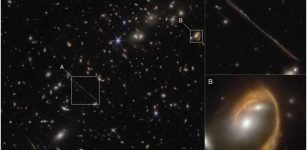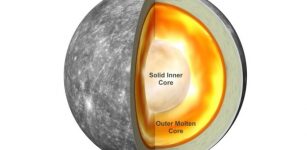“Hot Saturn” Exoplanet Discovered By TESS Mission
Eddie Gonzales Jr. – MessageToEagle.com – Astronomers identified a new exoplanet described as a “hot Saturn” using data from Transiting Exoplanet Survey Satellite (TESS).
The planet – TOI 197.01 – is a “hot Saturn” (most probably without rings) approximately the same size as Saturn and is also very close to its star, completing an orbit in just 14 days, and therefore very hot.
A “hot Saturn” passes in front of its host star in this illustration. Astronomers who study stars used “starquakes” to characterize the star, which provided critical information about the planet. See a video illustration of the planet orbiting the star. Larger image. Illustration by Gabriel Perez Diaz, Instituto de Astrofísica de Canarias.
Astronomers have determined that host star TOI-197 is about 5 billion years old and is a little heavier and larger than the sun. They also determined that planet TOI-197.01 is a gas planet with a radius about nine times the Earth’s, making it roughly the size of Saturn. It’s also 1/13th the density of Earth and about 60 times the mass of Earth.
“This is the first bucketful of water from the firehose of data we’re getting from TESS,” Steve Kawaler, a professor of physics and astronomy from Iowa State University, said in a press release.
NASA’s TESS mission’s main goal is to find exoplanets, planets beyond our solar system. It is also observing bright, nearby stars, allowing astronomers to follow up on its discoveries using other space and ground observations to further study and characterize stars and planets.
The spacecraft’s four cameras are taking nearly month-long looks at 26 vertical strips of the sky – first over the southern hemisphere and then over the northern. After two years, TESS will have scanned 85 percent of the sky.
TASC astronomers use asteroseismic modeling to determine a host star’s radius, mass and age. That data can be combined with other observations and measurements to determine the properties of orbiting planets.
See also:
“The thing that’s exciting is that TESS is the only game in town for a while and the data are so good that we’re planning to try to do science we hadn’t thought about,” Kawaler said.
“Maybe we can also look at the very faint stars – the white dwarfs – that are my first love and represent the future of our sun and solar system.”
Written by Eddie Gonzales Jr. – MessageToEagle.com Staff Writer



